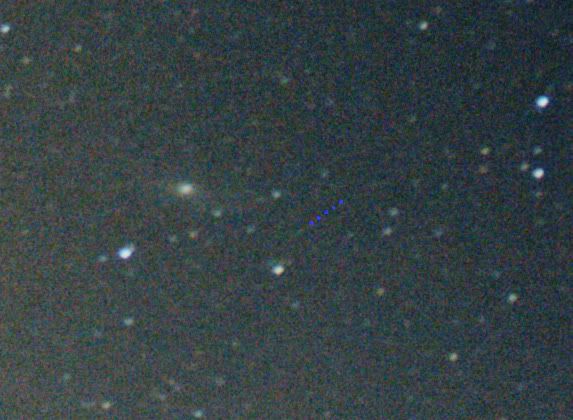After reading a lot of discussion around which ISO is best for Astro imaging, I decided to try an experiment. So, armed with the camera, 18-55 lens, a tripod and timer remote I set out to find out. I took a sequence of 5 shots each at ISO's of 100, 200, 400, 800 and 1600 (the entire range) and combined each set in DSS. The bad news is, the sky conditions were not identical in each image, there was clouds shifting through, a plane joined in the fun. Hopefully though, this won't be a problem.
Each stacked image was stretched and contrast adjusted, using curves only, nothing else has been done. No NR or any other processing. The stretch in each case was stopped when, I could increase the result no further without clipping the white point for the brighter stars.
My intent was to try and get each image looking as close as possible to each other in terms of viewable data.
ISO100
ISO200
ISO400
ISO800
ISO1600
I know I have a gradient and various foreign objects in each image, but I don't think that's an issue for this test. Something that did surprise me, despite the various conversations about when the ISO adjustments are applied is the amount of data that I was able to pull out at ISO100. From these images, my first impressions are that 200 seems to be optimal, both in terms of the amount of content and colours retained.
I then cropped the same (ish, without allowing for field rotation) from each image at about 100% for a peek at the pixels...
ISO100
ISO200
ISO400
ISO800
ISO1600
From these, the additional stretching required on the lower ISO's has introduced more noise in the background, which is kind of what I was expecting, from playing with daytime images and pulling shadow detail out in processing. I think this also shows, I wasn't able to apply the same amount of stretching to the higher ISO images, as I stopped just before clipping the white point. However, all told, I think, for me anyway, that ISO800 is probably easiest to deal with.
I'm sure there are flaws in my testing, the edits were all done at silly o'clock so it may be that more stretching would be possible on the tif's for each ISO. I also can't be certain that each image was fully stretched to it's limit.
Wednesday, 30 September 2009
Testing effectiveness of ISO
Subscribe to:
Post Comments (Atom)







No comments:
Post a Comment